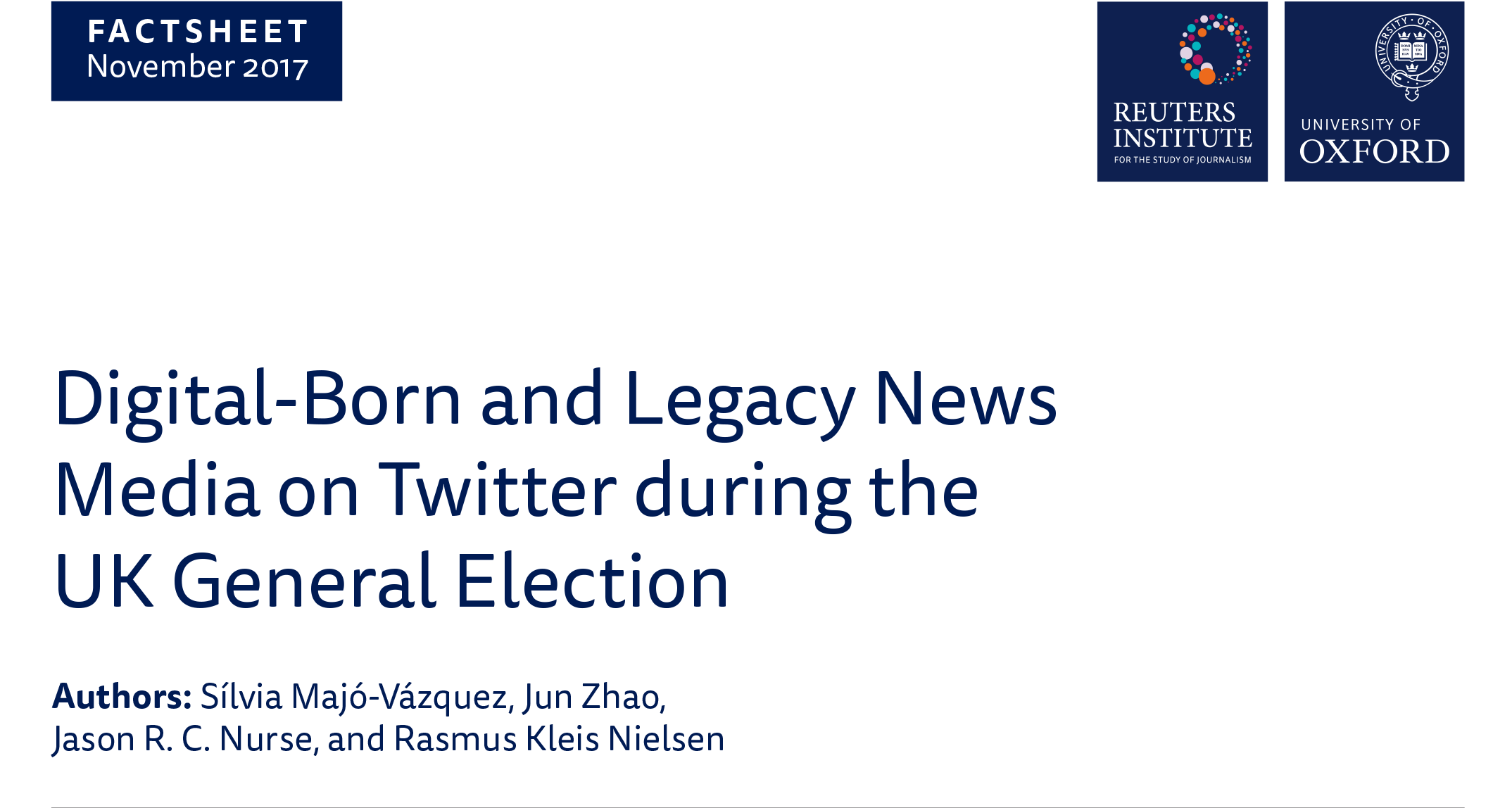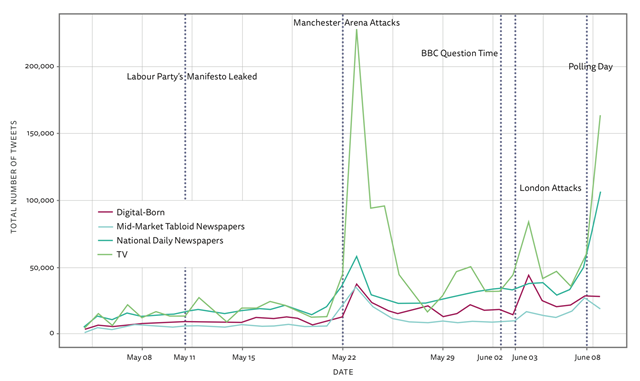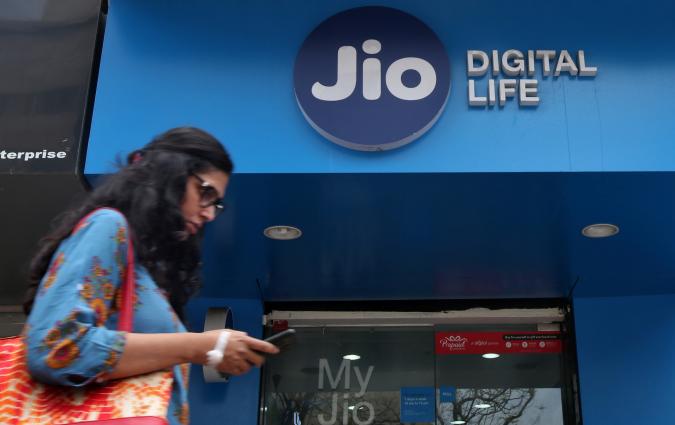Digital-Born and Legacy News Media on Twitter during the UK General Election

DOI: 10.60625/risj-aq1v-7766
This RISJ factsheet presents an analysis of a sample of 4.26 million news-related tweets from a larger dataset of 28 million tweets collected during the 2017 UK General Election. The document examines the role of digital-born and legacy news media in online political discussions. To do this, the authors Sílvia Majó-Vázquez, Jun Zhao, Jason R. C. Nurse, and Rasmus Kleis Nielsen have mapped Twitter discussions around a range of keywords and hashtags tied to the election as well as the activity of 129 British media outlets, including 105 legacy media and 24 digital-born outlets.
Their findings show that legacy media, including most broadcasters – BBC News, Channel 4 News, and Sky News figured very prominently in the political discussion on Twitter. The Economist and the Financial Times as well as a few pure digital-players also drew high levels of engagement and attention on Twitter during the same period of time, though they were much less active in posting news content.
Overall, the study shows legacy media generated almost four times as much activity and engagement as digital-born news media during the election. The figure below, also included in the study, plots the evolution of the volume of tweets over time by type of news provider. As shown, broadcasters were responsible for the highest number of tweets related to the election and were the more frequently mentioned during that period. Newspapers reached parity with broadcasters in terms of overall tweet volume during conventional political events like the television debates and the polling day.
Volume of tweets over time by media type

This is the third factsheet of a series of studies dedicated to understand news dynamics and audience behavior on Twitter during nation-wide elections. The document is titled Digital-Born and Legacy News Media on Twitter during the UK General Election and it also shows that tweeting frequently and having a high number of followers are not necessarily related to high levels of engagement from audiences. Some prominent broadcasters (BBC News and Sky News), and national newspapers (The Independent, The Guardian, and the Daily Telegraph), saw very high levels of engagement, which is consistent with their high level of posting activity and their audience reach. Others like The Economist and the Financial Times, as well as a few digital-born sites (including Breitbart The Canary, Conservative Home or Guido Fawkes/Order-Order), saw disproportionately higher levels of engagement than expected, given their tweeting activity and online audience reach.
This study also offers an opportunity to better understand audience behavior in the interplay between the political process and unforeseen emergency events like the attacks at Manchester Arena and London Bridge.
Published by the Reuters Institute for the Study of Journalism.

This report can be reproduced under the Creative Commons licence CC BY. For more information please go to this link.
Read more about “Digital-Born and Legacy News Media on Twitter during the UK General Election” on the link provided below:









